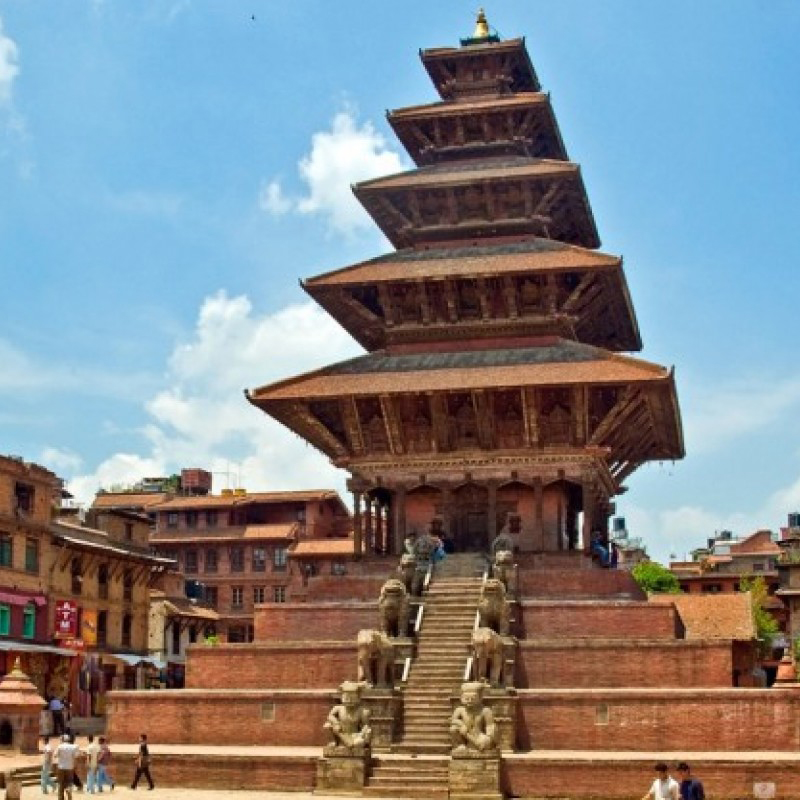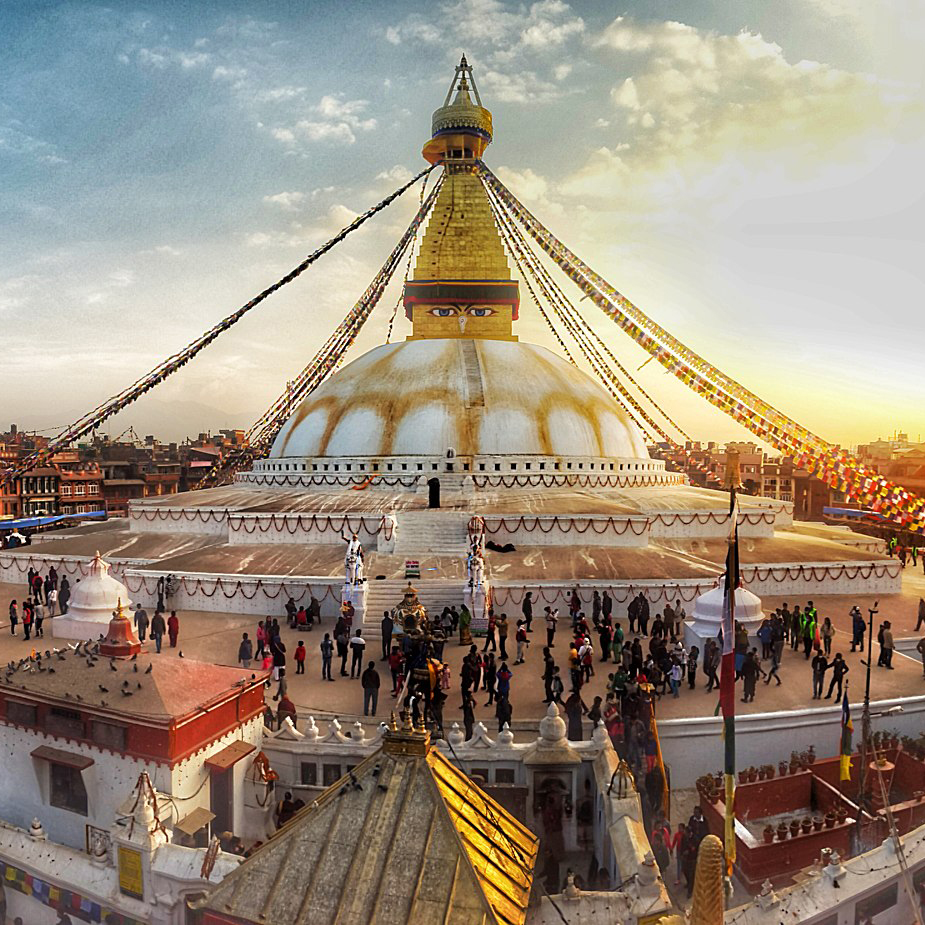 Bhaktapur Durbar Square is a conglomeration of pagoda and shikhara-style temples grouped around a fifty-five window palace of brick and wood. The square is one of the most charming architectural showpieces of the Valley as it highlights the ancient arts of Nepal. The golden effigies of kings perched on the top of stone monoliths, the guardian deities looking out from their sanctuaries, the wood carvings in every place-struts, lintels, uprights, tympanums, gateways and windows-all seem to form a well-orchestrated symphony. The main items of interest in the Durbar Square are:
Bhaktapur Durbar Square is a conglomeration of pagoda and shikhara-style temples grouped around a fifty-five window palace of brick and wood. The square is one of the most charming architectural showpieces of the Valley as it highlights the ancient arts of Nepal. The golden effigies of kings perched on the top of stone monoliths, the guardian deities looking out from their sanctuaries, the wood carvings in every place-struts, lintels, uprights, tympanums, gateways and windows-all seem to form a well-orchestrated symphony. The main items of interest in the Durbar Square are:
The Lion Gate:
Dating as far back as 1696 A.D., this gate is guarded on either side by two huge statues of lions. Alongside, there are two stone images of Bhairav (the dreadful aspect of Shiva) and Ugrachandi (the consort of Shiva in her fearful manifestation).
The Golden Gate:
The Golden Gate is said to be the most beautiful and richly moulded specimen of its kind in the entire world. The door is surmounted by a figure of the goddess Kali and Garuda (the mythical man-bird) and attended by two heavenly nymphs. It is also embellished with mythical creatures of marvellous intricacy. In the words of Percy Brown, an eminent English art critic and historian, the Golden Gate is the most lovely piece of art in the whole Kingdom: it is placed like a jewel, flashing innumerable facets in the handsome setting of its surroundings. The gate was erected by King Ranjit Malla and is the entrance of the main courtyard of the Palace of Fifty-five Windows.
The Palace of Fifty-five Windows:
This magnificent palace was built during the reign of King Yakshya Malla in A.D. 1427 and was subsequently remodelled by King Bhupatindra Malla in the seventeenth century. Among the brick walls with their gracious setting and sculptural design, is a balcony with Fifty-five Windows, considered to be a unique masterpiece of woodcarving.
The Art Gallery:
The Art Gallery contains ancient paintings belonging to the Hindu and Buddhist traditions of various periods and descriptions. This gallery is open everyday except Tuesday.
The Statue of King Bhupatindra Malla:
This statue showing King Bhupatindra Malla in the act of worship is set on a column facing the palace. Of the square’s many statues, this is considered to be the most magnificent.



